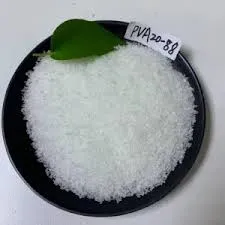The Role of Cement Thickener in Construction
Cement, one of the most widely used building materials in the world, has undergone numerous innovations to improve its performance and versatility. Among these innovations, the use of thickeners in cement mixtures has gained considerable attention in the construction industry. Cement thickeners are additives that enhance the viscosity and stability of cement, making them an essential component in various applications.
What is Cement Thickener?
Cement thickener is a substance that increases the viscosity of cement pastes, mortars, and concrete mixtures. These thickeners can be natural or synthetic, and they play a crucial role in improving the performance of cement-based materials. The primary function of a thickener is to modify the flow characteristics, allowing for better control during application and reducing the risk of segregation and bleeding.
Benefits of Using Cement Thickener
1. Improved Workability One of the foremost benefits of incorporating thickeners into cement mixes is the improvement in workability. Thickeners help maintain a uniform consistency, allowing workers to handle and manipulate the material more easily. This is particularly important in vertical applications, where flow control is vital to prevent slumping.
2. Enhanced Adhesion Cement thickeners can significantly increase the adhesion properties of the mixture. This is especially beneficial in applications involving tile setting or plastering, where strong adhesion is vital for the longevity of the installation. A thickened cement paste ensures that the material adheres well to various surfaces, reducing the risk of cracking or detachment over time.
3. Reduction of Water Consumption The incorporation of thickeners can lead to reduced water content in the mix, which is advantageous for achieving higher strength and durability. Lower water-cement ratios generally result in a denser microstructure, which enhances the overall quality of the hardened concrete.
cement thickener

4. Mitigation of Segregation In traditional cement mixes, segregation can occur, where the heavier particles settle at the bottom and the lighter components rise to the top. Thickeners help maintain a homogeneous mixture, minimizing segregation and ensuring consistent performance throughout the application.
5. Control over Setting Time Certain thickeners can influence the setting time of cement mixtures. This control allows construction teams to manage curing times effectively, ensuring that projects stay on schedule while allowing sufficient time for proper application.
Applications of Cement Thickener
Cement thickeners find a wide range of applications across the construction industry. They are commonly used in
- Mortars and grouts Enhancing the flow and adhesion properties for masonry work and tile installations. - Self-leveling compounds Providing optimal viscosity for even application and effective leveling on floors. - Repair and restoration projects Ensuring that repair mixtures adhere well to existing structures and maintain their integrity over time.
- Precast concrete products Improving the manageability of mixtures used in the production of precast components.
Conclusion
The inclusion of cement thickeners in construction materials represents a significant advancement in the industry. Their ability to enhance workability, adhesion, and overall performance makes them valuable components in various applications. As the demand for high-quality, durable building materials continues to grow, the use of cement thickeners will likely become more prevalent, helping to push the boundaries of what is possible in modern construction. By optimizing the characteristics of cement mixtures, thickeners not only improve the immediate efficiency of construction projects but also contribute to the longevity and sustainability of built environments.
-
The Application and Significance of Construction RdpNewsMay.19,2025
-
Industrial Grade HpmcNewsMay.19,2025
-
Building Coating Adhesive Building Coating Adhesive HpmcNewsMay.19,2025
-
Application Of Hpmc For Detergent For Detergent In DetergentsNewsMay.19,2025
-
Application Of Hpmc Cellulose In Cement-Based MaterialsNewsMay.19,2025
-
Application Of High Quality Hpmc For Construction In The Field Of ConstructionNewsMay.19,2025




